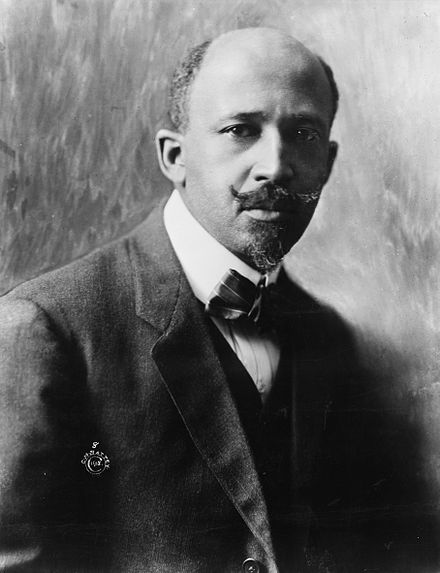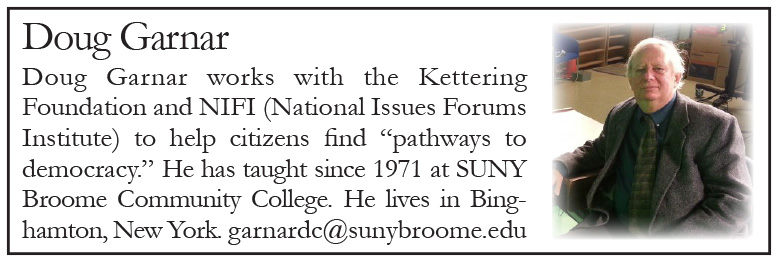On the COLOR LINE: Books and Films that Explore Racism in the US
- By DOUG GARNAR–
In the past three months America has faced a difficult pandemic and now the issue of racism is roiling the citizenry to take to the streets, exercising their First Amendment right of peaceful protest and petition.
The following books and films are a short sampler focusing on the issue of racism in the US both path and present. Last August The New York Times began its 1619 project, marking the 400-year anniversary of the first importation of slaves to the colonies. This project is ongoing and a useful resource.

The problem of the twentieth century is the problem of the color-line.
W.E.B Du Bois
Books past and present:
• Fredrick Douglass, Writings and Speeches, Fredrick Douglass (probably the most influential 19th century Black author/activist)
• The Autobiography of W.E.B. Du Bois, W.E.B. Du Bois (20th century Black sociologist)
• By Any Means Necessary, Malcom X Speeches and Writings, Malcom X (mid-20th century Black critic of American society)
• Soul on Ice, Eldridge Cleaver (mid -20th century Black critic of American society/activist)
• A Testament of Hope: The Essential Writings and Speeches of Martin Luther King Jr., Martin Luther King Jr. (best compendium of the ideas of an American Icon)
• Invisible Man, Ralph Ellison (a seminal Black writer during the middle of the 20th Century)
• Go Tell It on A Mountain, James Baldwin (a brilliant Black writer who captures the psychological/social injustice of racism)
• The Bluest Eye, Toni Morrison (first Black woman author to win the Noble Prize for literature; a number of her books have been banned in schools and libraries)
• I Know Why the Caged Bird Sings, Maya Angelou (a bookend to Toni Morrison as one of the finest Black woman writers of the second half of the 20th century)
• The New Jim Crow: Mass Incarceration in The Age of Color Blindness, Michelle Alexander (arguably the best book on the Black experience in prison)
• America’s Original Sin: Racism, White Privilege and The Bridge To a New America, Jim Wallis (a white evangelical minister/founder of Sojourners who shows another side of Protestant evangelicals)
• Tears We Cannot Stop: A Sermon to White America, Michael E. Dyson (probably the best current book on racism by a Black Baptist minister)
• The Guarded Gate, Daniel Okrent (Okrent shows how racism and eugenics led to the 1924 Immigration law essentially stopping immigration of Jews, Poles, Italians and other East Europeans from coming to the US for the next 40 years—most striking is the contention that all the aforementioned groups were non-whites!)
Films over the past century:
• Birth of A Nation—one the most horrific films justifying the KKK and depicting Blacks as sub- humans and was shown quietly in Woodrow Wilson’s White House. While a political progressive, he was a racist through and through.
• Gone with The Wind—highly reflective period piece which helped to glorify slavery and bolster negative stereotypes about Blacks and embed them in American culture. For Blacks, there was not a better tomorrow!
• Guess Who Is Coming to Dinner?—film was made before the Supreme Court struck down miscegenation laws in 1967.
• 12 Years A Slave—-based on the true story of a free Blackman who is kidnapped and sold into slavery for 12 years.
• Amistad—the role of an ex-President, serving as defense counsel and the support of abolitionist churches helps lead to an unusual and historic Supreme Court ruling that freed a group of Black slaves.
• Lincoln—Spielberg’s picture captures Lincoln, who is convinced that the 13th Amendment freeing all slaves is crucial to a post-Civil War Reconstruction. Lincoln’s skills as both a transformational leader and a transactional leader are brilliantly portrayed.
• Selma—brilliantly shows MLK Jr’s non-violent march to secure voting rights for Blacks. The scene at the Pettus Bridge is one of the great inflection points in the struggle for Civil Rights.
• Four Little Girls—a devastating picture of a church bombing leading to the death of four little girls in the church.
• Malcolm X—captures the evolution of a contemporary of Martin Luther King Jr. An early film by Spike Lee, one of the seminal film directors of our times.
• Hidden Figures—the remarkable tale of three Black women mathematicians who, despite overt racism, are employed by NASA to help with our first space launch—a role model for all young girls.
• The Butler—an unusual film chronicling the career of a Black White House butler over 34 years.
• Ruby Bridges—a six-year-old girl sets off to school in 1960 in New Orleans, and is ostracized by everyone except her teacher. Parents of her would-be classmates refused to let their children be in the same room. An inspirational film about how a six-year-old child deals with hatred and how a teacher can make all the difference.
• Ghosts of Mississippi—-a film that shows justice, even though it takes 30 years, is worth the effort (focuses on the bringing to justice of the killer of civil rights leader Medgar Evers).
• BlacKkKlansman—focuses on the true story of the first Black police officer in Colorado Springs, who successfully infiltrates and exposes a secret KKK cell. One of Spike Lee’s best films, and he has a 30-year career of them!
• Eyes on The Prize, 1 & 2—a very well made documentary series looking at the civil rights era (1954-65 and 1965-85). Excellent use of documentary footage.
• Roots—1970s TV mini-series done by Alex Haley. Elements of Haley’s family are worked into the story of Kunta Kinte starting in the late 18th century and going through the Civil War.
The aforementioned books and films are but a very small sampler of a much richer cache of materials which can help us all gain a better understanding of the Black experience from 1619 to the present. This is not intended as a comprehensive list. We welcome additional titles and discussion around how media (including entertainment media) colors our perceptions of the world.
James Baldwin observed, “It is certain, in any case, that ignorance, allied with power, is the most ferocious enemy justice can have.” We are an increasingly diverse society and it is imperative that we learn how to both talk and, more importantly, listen to all.
Any questions/observations about this column maybe directed to SUNY Broome Professor, Doug Garnar at: garnardc@sunybroome.edu.
W. E. B. Du Bois image credit: Cornelius Marion (C.M.) Battey (1873–1927).
